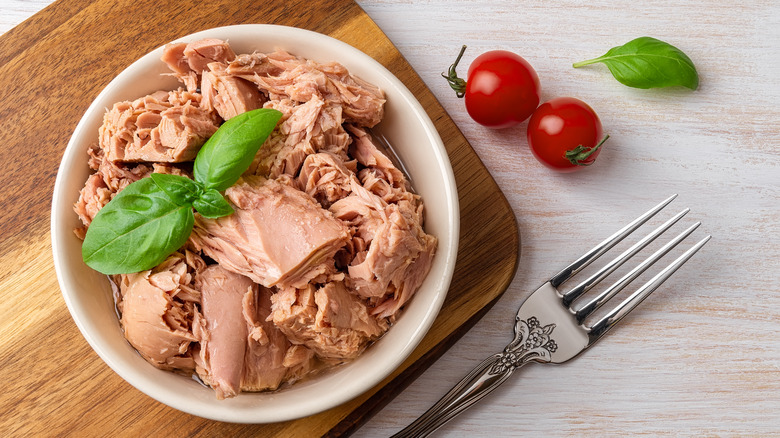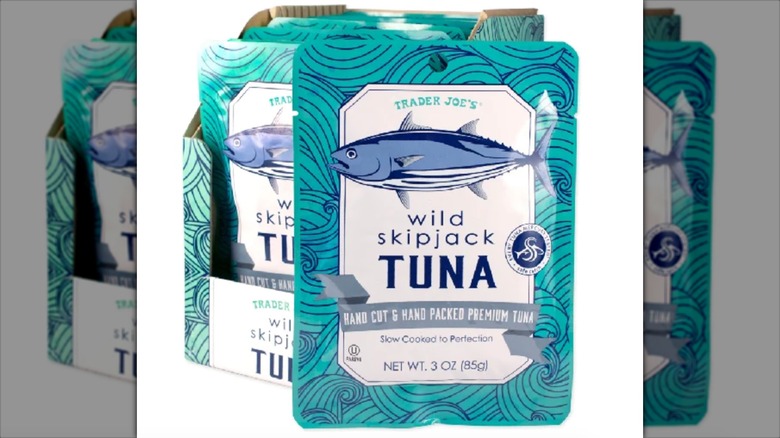The Mercury Testing Method That Sets Trader Joe's Tuna Apart
You've likely heard about mercury levels in fish, especially with tuna species. Though mercury occurs naturally in plants, animals, and the environment in general, it's human activity that jettisons mercury levels into the toxic category, explains Scientific American: Coal burning, waste incineration, and other commonplace industrial practices send mercury particles on the fly, landing in bodies of water and getting consumed by the fish we love to eat.
It's not a pretty scenario, to say the least. The Natural Resources Defense Council (NRDA) calls mercury a dangerous neurotoxin that can harm brain function and the nervous system, presenting especially challenging health issues for young children and women who are pregnant.
Since tunas are generally large fish, they tend to carry higher amounts of mercury contamination due to biomagnification, NRDA explains. This basically means they eat smaller fish also containing mercury, and it accumulates in their systems — eventually landing in ours. The NRDA places several tuna species in the "high mercury" and "highest mercury" categories.
As bleak as that may sound, discerning and sustainable fishing methods are becoming more common, and an increasing number of tuna brands test for mercury in the fish before processing and selling it. That said, one particular brand swims the extra mile: Trader Joe's, the private-label company that claims sustainability "is intrinsic to [their] DNA."
Each and every fish
Testing for Trader Joe's wild skipjack tuna, which comes in sealed pouches rather than cans, involves every individual fish. At TJ's skipjack processors, there are no mass mountains of cut tuna getting randomly tested in batches. Every fish gets its own test and only those that pass with flying colors make it into those pouches, explains Trader Joe's.
The FDA sets what's known as an action level for harmful substances in food, at which point it can legally pull the product from the marketplace. Notably, Trader Joe's skipjack tuna comes in at about 10 times lower than that limit, rejecting any skipjack that clocks in under 0.15 PPM, or parts per million, of mercury.
Since tuna is naturally packed with protein, valuable vitamins, and omega-3 fatty for healthy brains and eyes, per Healthline, you want those nutrients to remain intact. That's another plus for the minimally processed Trader Joe's skipjack. Rather than being cooked twice, like many canned tunas, the wild skipjack gets cut and packed by hand, then cooked slowly inside the pouch, per Trader Joe's. Flavors and nutrients remain inside, safely sealed until they reach your fork.
Anyone keeping sustainability records on food providers can rest assured Thailand-native tuna is caught using sustainable practices, including the lack of fish aggregating devices (FADs). NOAA Fisheries notes that tunas are common targets of FADs, which can harm marine mammals and sea turtles when they get tangled in ropes, nets, and fishing lines.

